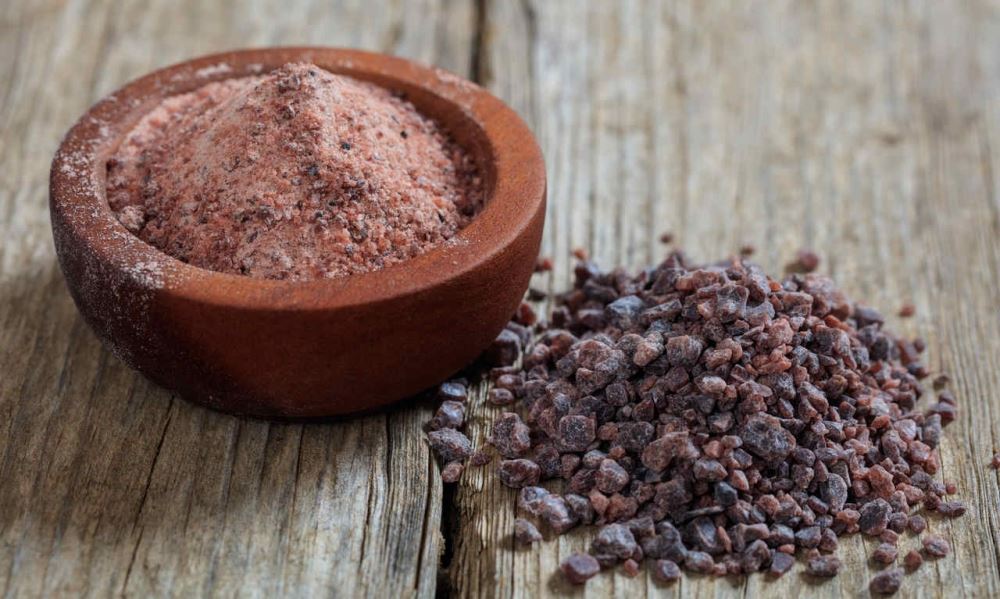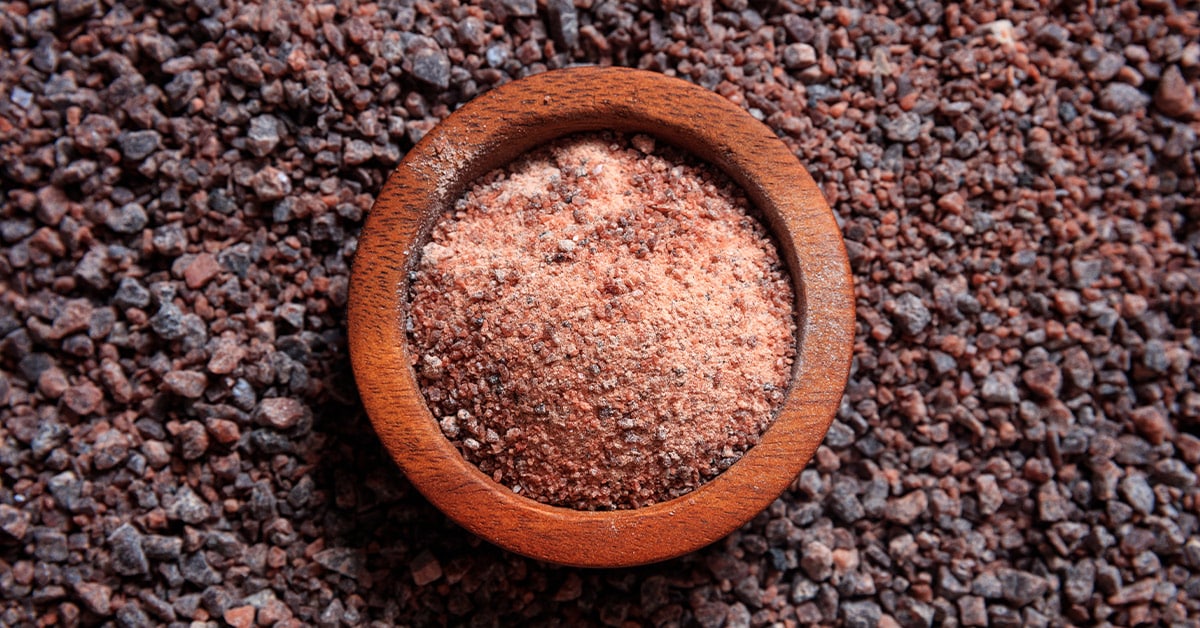Blog
What is the difference between Kala Namak and black salt?

At first glance, the terms “Kala Namak” and “black salt” might seem interchangeable. Both boast a dark hue and promise an exciting twist to your culinary creations. However, beneath the surface of their color lies a world of fascinating distinctions. Let’s embark on a journey to understand the unique characteristics that set Kala Namak apart from other black salts.
Origins and Processing:
-
Kala Namak: This volcanic rock salt hails from the Himalayan regions, particularly in Pakistan. Its dark color arises from a unique combination of minerals like sodium chloride, sodium sulfate, sodium thiosulfate, and iron sulfide present in the volcanic deposits. The traditional production method involves fermenting crushed volcanic rock salt with organic materials like seashells, woodchips, and even animal dung. This fermentation process plays a crucial role in developing Kala Namak’s distinctive eggy aroma and flavor profile.
-
Black Salts: The term “black salt” encompasses a broader category encompassing various types of salts with a dark color. These salts can originate from different sources, including volcanic rock (similar to Kala Namak), but also from sea salt with added charcoal or activated charcoal for color. Processing methods vary depending on the specific type of black salt. Some may involve high-heat treatment or the addition of coloring agents to achieve the desired black hue.
Flavor Profile:
-
Kala Namak: This is where Kala Namak truly shines. Beyond its salty element, it offers a complex interplay of flavors. The presence of sulfur compounds creates a unique eggy or pungent aroma, often described as resembling boiled eggs or even slightly like garlic. This characteristic aroma sets Kala Namak apart from other salts. However, alongside the eggy notes, Kala Namak offers a subtle sweetness and a hint of bitterness, creating a truly multifaceted flavor experience.
-
Black Salts: The flavor profile of black salts can vary greatly depending on their origin and processing methods. Volcanic black salts like Kala Namak might share some eggy or sulfurous notes. However, black salts derived from sea salt with added charcoal often have a more neutral or slightly smoky flavor profile. The specific flavor characteristics depend on the type of charcoal used and the processing methods employed.
Health Benefits:
-
Kala Namak: The unique mineral composition of Kala Namak has led some to believe it offers potential health benefits. These benefits, however, are not definitively proven by scientific research and require further investigation. Here’s a glimpse into some potential benefits associated with Kala Namak:
-
Digestive Aid: The presence of sodium bicarbonate (baking soda) might contribute to its potential role as a digestive aid.
-
Electrolyte Balance: Kala Namak is a good source of electrolytes, including sodium, potassium, and magnesium.
-
Blood Pressure Regulation: While high sodium intake can be detrimental to blood pressure, some studies suggest that specific components in Kala Namak, like potassium and magnesium, might help regulate blood pressure. However, moderation is key.
-
-
Black Salts: The potential health benefits of other black salts are less documented compared to Kala Namak. Depending on the source and processing methods, some black salts might offer trace minerals similar to sea salt. However, the specific potential benefits depend on the particular type of black salt and require further research.
Culinary Applications:
-
Kala Namak: This unique salt holds a special place in Indian cuisine. Its eggy and sulfurous notes add depth and complexity to countless dishes. In North India, it’s a staple ingredient in chaat masala, a tangy and flavorful street food spice blend. It enhances the taste of dals (lentil stews) and curries, and its eggy aroma can be used to create vegan dishes with a similar flavor profile to scrambled eggs. South India also incorporates Kala Namak in dishes like pani puri, a savory street food with a tangy and slightly eggy flavor.
-
Black Salts: The culinary applications of other black salts can vary. Volcanic black salts with a similar flavor profile to Kala Namak can be used in similar ways in Indian cuisine. However, black salts derived from sea salt with added charcoal often have a more neutral flavor profile and might be better suited for finishing dishes for a visual appeal rather than a significant flavor impact.
A Final Note:
While both “Kala Namak” and “black salt” share a dark hue, their unique origins, processing methods, flavor profiles, potential health benefits, and culinary applications set them apart. Kala Namak, with its fascinating history and complex flavor profile, offers a distinct experience that elevates Indian cuisine and sparks culinary creativity. So, the next time you encounter black salt, delve deeper to understand.
FAQ:
- Are Kala Namak and black salt the same thing?
Not quite! Both are dark-colored salts, but Kala Namak has a unique origin, processing method, and flavor profile compared to other black salts.
- Where does Kala Namak come from?
Kala Namak is volcanic rock salt from the Himalayan regions, particularly Pakistan.
- How is Kala Namak processed?
It involves fermenting crushed volcanic rock salt with organic materials, leading to its distinctive eggy aroma.
- What makes other black salts different?
Black salts can come from various sources like sea salt with added charcoal. Their processing methods and flavor profiles vary significantly.
- What does Kala Namak taste like?
Beyond salty, it offers a complex mix of eggy, sulfurous, slightly sweet, and bitter notes.
- How does black salt taste compared to Kala Namak?
It depends on the type. Volcanic black salts might share some eggy notes, while sea salt-based black salts can be more neutral or smoky.
- Are there any health benefits to Kala Namak?
Potential benefits like digestive aid, electrolyte balance, and blood pressure regulation are under investigation.
- Do other black salts offer health benefits?
Research is limited, but some might offer trace minerals similar to sea salt, depending on the source.
- How is Kala Namak used in cooking?
It adds depth to Indian dishes like chaat masala, dals, curries, and even vegan “eggy” dishes.
- Can I use any black salt like Kala Namak?
Volcanic black salts might be a closer substitute, but sea salt-based black salts might have a different flavor impact. Consider taste before using them interchangeably.



